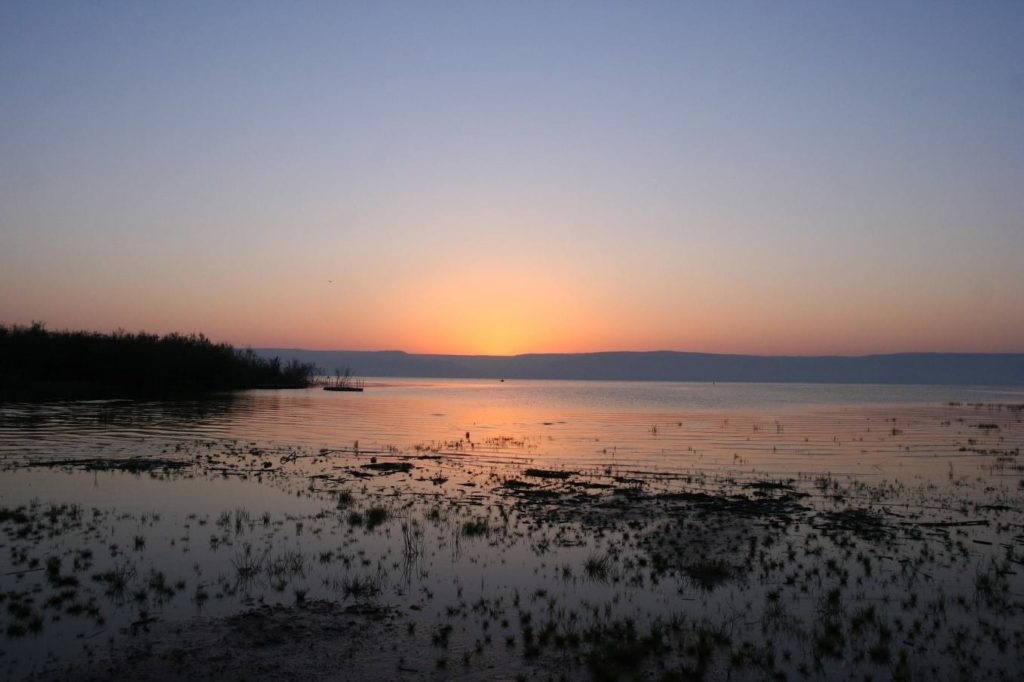KINNERET – Millions of tourists visit Lake Kinneret in Israel every year. They visit because, since Biblical times and amongst Christians today, it is known as the Sea of Galilee.

The Sea of Galilee and the surrounding areas have been the sites of much of Jesus’ earthly ministry and many of His miracles recording in the New Testament. Jesus walked on the waters of Galilee. On another occasion, He was asleep in a boat being tossed about in a storm. Awakened by his frightened disciples, He spoke the words “Peace. Be still” to the storm; to which the storm immediately obeyed.
Now another miracle is happening at the Sea of Galilee.
Israel is just as dependent upon access to clean water as any other country. As of August 2018, the natural water reserves in the Sea of Galilee had reached a deficit of 2.5 billion cubic meters (approximately 100 times the volume of the Great Pyramid of Giza or five times the volume of Sydney Harbour), setting a century-old record according to the Israeli Water Authority.
Israel has suffered from severe drought conditions for the past five years. The drought, combined with the demands of a growing population, has brought many of the country’s freshwater supplies close to the Day Zero emergency faced by Cape Town in 2018.
As late as February 2019, the Sea of Galilee was 15 feet below capacity.
A spokesman for the Israeli Water Authority reported that
“Until not so long ago, the Sea of Galilee was one of three main natural sources that supplied water. The Sea of Galilee supplied a third of the quantity of water that was needed in Israel. Now, it hardly supplies. We cut down the pumping there from about 400 million cubic meters per year to less than 30. Nevertheless, the level of the water . . . continues going down.”
Ironically, during the month of World Water Day (March 22), Galilee has experienced yet another miracle with the fourth consecutive month of above average rainfall. The last time northern Israel experienced similar sustained rainfall was in 1992.
For added perspective, the lake level was dangerously close to the “black line” during the summer of 2018. The black line is the point at which it is no longer possible to draw fresh water from the lake. The Water Authority had already reduced its outtake from 400 million gallons to 30 million. Things were looking bleak.
As a result of the abundance of rain and snowmelt (which is just beginning), the Sea of Galilee has already risen 9.2 feet. During the 24-hour period from April 1 to April 2, the lake level rose by more than four inches.
United with Israel reported on April 2 that “The Sea of Galilee is likely to fill up completely as the heavy snows melt on the peak of Mount Hermon during the Spring.”
This is a good time to remember the Lord’s promise to Israel in Isaiah 44:3, that
I will pour water on him who is thirsty, and floods on the dry ground; I will pour My Spirit on your descendants, And My blessing on your offspring.
Even more so, as we thank the Lord for this Sea of Galilee miracle, may it also be a reminder to us that “Whoever drinks of this water will thirst again,” (John 4:13)
But whoever drinks of the water that I shall give him will never thirst. But the water that I shall give him will become in him a fountain of water springing up into everlasting life. (John 4:14)
To read more news on the Global Clean Water Crisis on Missions Box, go here.
Sources:
- Breaking Israel News, Israel’s Natural Water Reserves Lowest in 100 Years
- United with Israel, Israel Blessed with Abundance of Rain, Sea of Galilee Levels Rise!
- Haaretz, Lake Kinneret Is the Fullest It’s Been in Five Years, and There’s More to Come
- The Jewish Press, Lake Kinneret Rises Again, Island Disappears
- Arutz Sheva, Kinneret rises 11 centimeters in 24 hours
- CBN News, Israel Uses Engineering Innovation to Save a Shrinking Sea of Galilee
- Blue Bulb Projects, How big is 100,000 cubic meters?
- Globes, Wettest March since 2003 lifts Kinneret to 6-year high
For more information about this, click here.




